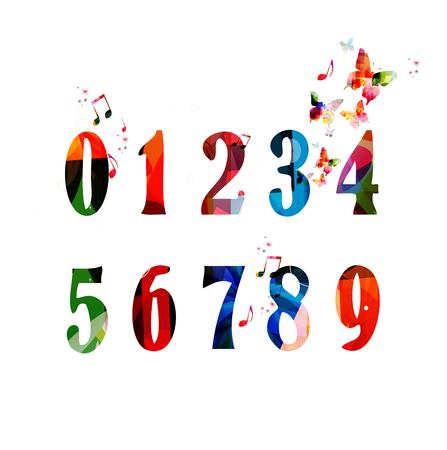Introduction to Tarot and Its Arrival in Britain
The Tarot, an evocative deck of illustrated cards, has long been associated with the mysteries of the occult and the spiritual exploration of the unknown. Originating in 15th-century Italy as a parlour game known as “tarocchi,” Tarot cards gradually acquired esoteric connotations, evolving into tools for divination and self-reflection. Each card carries symbolic imagery, drawing from a tapestry of mythological, astrological, and archetypal themes that have resonated across centuries.
Tarot’s journey to Britain began in earnest during the 18th and 19th centuries—a period marked by burgeoning interest in mysticism and spiritualism across the British Isles. The Victorian era, in particular, fostered an environment where curiosity about the unseen world flourished. Intellectual circles, secret societies, and literary salons became fertile ground for the introduction of esoteric traditions from continental Europe. As these cards crossed the Channel, they were swiftly adopted by British seekers eager to explore new avenues of spiritual inquiry.
The assimilation of Tarot into British culture was not merely a matter of importing foreign curiosities; rather, it reflected a deeper yearning within British society for understanding life’s mysteries through symbolic language. Tarot’s arrival dovetailed with the rise of spiritualist movements and the revival of ancient mystical practices. It became both a mirror for personal introspection and a bridge between British sensibilities and broader European occult traditions. Thus, Tarot established its unique foothold within Britain’s spiritual landscape, setting the stage for its enduring influence in local mysticism and spiritualism.
2. The Victorian Occult Revival and British Mysticism
The 19th century in Britain witnessed a remarkable surge in esoteric interests, often referred to as the Victorian Occult Revival. This period saw the flourishing of mystical societies, secret orders, and circles of learned individuals who sought to explore the unseen realms. The Tarot, with its evocative symbolism and enigmatic origins, found fertile ground amidst these spiritual currents. The British fascination with the mystical and the unknown was not merely an eccentricity of the upper classes; it permeated society, influencing both popular culture and serious spiritual inquiry.
Prominent societies such as the Hermetic Order of the Golden Dawn emerged in this era, blending ritual magic, Kabbalah, astrology, and Tarot into a syncretic spiritual path. The Golden Dawn, founded in 1887, became a crucible for esoteric innovation, and its members included notable figures such as W.B. Yeats, Arthur Edward Waite, and Aleister Crowley. These individuals not only contributed to the scholarly understanding of Tarot but also elevated its status as a tool for personal transformation and mystical insight. The Tarot was used in meditative practices, initiatory rituals, and even for divinatory purposes, aligning with the broader Victorian quest for hidden knowledge.
To further illustrate the influential figures and societies during this period, see the following summary:
| Society/Order | Notable Figures | Contribution to Tarot |
|---|---|---|
| Hermetic Order of the Golden Dawn | W.B. Yeats, A.E. Waite, Aleister Crowley | Developed new Tarot rituals; authored foundational Tarot texts; designed influential Tarot decks |
| Theosophical Society | Annie Besant, Helena Blavatsky | Promoted Tarot as a spiritual and philosophical system |
| Societas Rosicruciana in Anglia | William Wynn Westcott | Linked Tarot with Rosicrucian esoteric teachings |
The Victorian era thus marked a pivotal turning point for Tarot in British mysticism. Far from being relegated to mere fortune-telling, the cards became an integral part of spiritual exploration and self-discovery. The intellectual rigor and ceremonial devotion of these societies imbued Tarot with new respectability, ensuring its place at the heart of British spiritualism for generations to come.

3. Tarot as a Tool in the Spiritualism Movement
Within the tapestry of British spiritualism during the late nineteenth and early twentieth centuries, Tarot cards emerged as a significant tool for those seeking to bridge the divide between the material and the spirit worlds. Spiritualists in Britain, often gathering in genteel parlours or quiet country homes, sought communion with spirits through séances and mediums. The Tarot deck, imbued with symbolic imagery and layered meanings, became a natural extension of these efforts, offering both structure and symbolism to the delicate process of spirit communication.
During séances, mediums would sometimes draw upon the Tarot not only as an oracle but as a visual focus for channelling spiritual energies. Each card drawn was believed to be guided by unseen hands, its interpretation infused with messages from departed loved ones or guiding spirits. In this context, the Tarot acted as a bridge – its archetypes resonated deeply with both sitters and mediums, providing a shared language through which spiritual truths might be revealed. The act of shuffling and dealing the cards became ritualised, reinforcing the solemnity of the occasion and lending weight to each revelation.
British spiritualists were particularly attuned to the historical and mystical roots of the Tarot, viewing it as more than a mere fortune-telling device. For them, each card represented not only personal insight but potential messages from the other side. Mediums might interpret The Star as a sign of hope sent by a benevolent ancestor, or The Tower as a warning from spirit guides against impending misfortune. In this way, Tarot readings during séances were woven seamlessly into broader spiritualist practices, reflecting both reverence for tradition and openness to new forms of communion with the unseen world.
4. Influence of the Hermetic Order of the Golden Dawn
The Hermetic Order of the Golden Dawn, founded in London in the late 19th century, stands as one of the most influential societies shaping the contemporary understanding and use of Tarot within British mysticism and spiritualism. This secretive yet profoundly impactful organisation not only formalised ritualistic practices but also reimagined the Tarot as a tool for esoteric exploration, self-knowledge, and magical working. The Golden Dawns structured approach left an indelible mark on how Tarot was interpreted and practised throughout Britain and beyond.
Systematisation of Tarot Structure
Prior to the Golden Dawn’s involvement, Tarot decks were often used for card games or simple fortune-telling. However, members of this society meticulously reconstructed the structure of the Tarot, aligning each card with astrological, Kabbalistic, and elemental correspondences. Their system went beyond mere divination, embedding each card into a grand symbolic framework that resonated with their wider teachings on magic and spiritual development.
| Aspect | Pre-Golden Dawn Usage | Golden Dawn Contribution |
|---|---|---|
| Major Arcana Symbolism | Simple allegories, loosely defined meanings | Kabbalistic paths, astrological connections assigned to each card |
| Minor Arcana Structure | Numerical and suit-based readings | Elemental associations (Earth, Air, Fire, Water), court cards linked to personality archetypes |
| Ritual Use | Mainly entertainment or basic fortune-telling | Integrated into magical ceremonies, meditative practices, pathworking exercises |
Popularisation and Enduring Legacy
The society’s influence extended well beyond its secret chambers. Many prominent members—such as Arthur Edward Waite—contributed directly to the design and publication of now-iconic decks like the Rider-Waite-Smith Tarot. These decks became widely available to the public in Britain and played a pivotal role in demystifying Tarot for a broader audience. Through lectures, writings, and instructional manuals, the Golden Dawn’s interpretations permeated popular culture and cemented Tarot as a cornerstone of British mystical practice.
Cultural Integration in Britain
The legacy of the Golden Dawn is evident in contemporary British attitudes towards Tarot. No longer relegated to parlour games or fringe fortune-telling, Tarot has become a respected spiritual tool—used in personal meditation, psychological insight, and group ritual alike. The society’s emphasis on symbolism continues to inform British esoteric groups today, ensuring that their methodical approach remains at the heart of local spiritual traditions.
5. The Evolution of British Tarot Decks
Among the many contributions Britain has made to Western mysticism and spiritualism, few are as culturally significant as the development of its own tarot decks. The early twentieth century marked a turning point with the creation of the Rider-Waite-Smith Tarot, a collaboration between Arthur Edward Waite, an influential member of the Hermetic Order of the Golden Dawn, and Pamela Colman Smith, a visionary artist. This deck, first published in 1909 by the London firm Rider & Co., departed from continental traditions by imbuing all seventy-eight cards with rich, evocative imagery. The Rider-Waite-Smith deck swiftly became a cornerstone for both divinatory practice and artistic inspiration within British esoteric circles.
The cultural resonance of this deck is deeply entwined with the unique spiritual climate of Edwardian Britain—a period when occult study flourished among intellectuals and artists alike. The Rider-Waite-Smith’s accessible symbolism and narrative-driven illustrations allowed seekers from diverse backgrounds to engage with tarot’s mysteries. This inclusive approach reflected broader currents within British spiritualism, which increasingly sought to democratise mystical knowledge and bridge class divides through shared experience and collective inquiry.
In subsequent decades, other notable British tarot decks emerged, each reflecting evolving social values and philosophical trends. Aleister Crowley’s Thoth Tarot, designed in collaboration with Lady Frieda Harris during the tumultuous years of the Second World War, epitomised the marriage of esoteric theory and avant-garde artistry. The Thoth deck’s intricate imagery mirrored Crowley’s own complex cosmology and the shifting sensibilities of a society grappling with profound transformation.
These prominent British tarot decks have not only shaped the practice of divination but have also become cultural artefacts in their own right. Their influence extends beyond mysticism into literature, visual art, and even psychology—fields where symbolic language continues to serve as a bridge between conscious awareness and deeper intuition. Whether used for personal reflection or communal ritual, British tarot decks embody a tradition that honours both imagination and introspection, inviting each generation to find its own meaning within their time-honoured images.
6. Contemporary British Perspectives on Tarot
In present-day Britain, Tarot has evolved beyond its historic associations with secret societies and Victorian parlour séances, becoming a vibrant facet of both individual and collective spiritual practice. Today’s British mystics and spiritual seekers often approach Tarot as a tool for self-reflection, psychological exploration, and personal empowerment rather than solely for divination or fortune-telling. This shift reflects broader cultural trends towards mindfulness and holistic well-being, with Tarot readings commonly integrated into wellness retreats, therapy sessions, and even corporate team-building exercises.
The modern British attitude toward Tarot is characterised by openness and inclusivity. While some still consult traditional readers in mystical shops nestled among cobbled streets or at summer solstice festivals like Glastonbury, many others engage with Tarot through online communities, podcasts, and workshops that blend ancient symbolism with contemporary life challenges. The language surrounding Tarot has also adapted to suit today’s values: terms such as “guidance,” “insight,” and “personal growth” have replaced more deterministic phrases, reflecting a desire for agency and conscious choice.
Tarot’s cultural standing within the UK remains multifaceted. On one hand, it continues to carry an air of mystery and intrigue rooted in Britain’s rich history of magical societies; on the other, it enjoys mainstream acceptance as an accessible form of creative introspection. Universities occasionally feature courses on esoteric traditions that include Tarot studies, while independent bookshops and metaphysical fairs regularly host workshops led by diverse practitioners who draw from both the Rider-Waite-Smith tradition and innovative new decks.
Notably, contemporary British Tarot practice is marked by a strong sense of community and ethical responsibility. Many readers emphasise the importance of consent, confidentiality, and respect for personal boundaries—a reflection of evolving social values. There is also growing recognition of the need for cultural sensitivity, as practitioners acknowledge the roots of Tarot in multiple traditions and strive to avoid appropriation or misuse.
Ultimately, Tarot in modern Britain serves as a bridge between past and present—a living tradition that continues to adapt to the needs of each generation. Whether encountered in the hushed corners of an old London bookshop or discussed over tea in a Brighton café, Tarot remains an enduring emblem of the British mystical spirit: pragmatic yet poetic, rooted yet ever-evolving.


